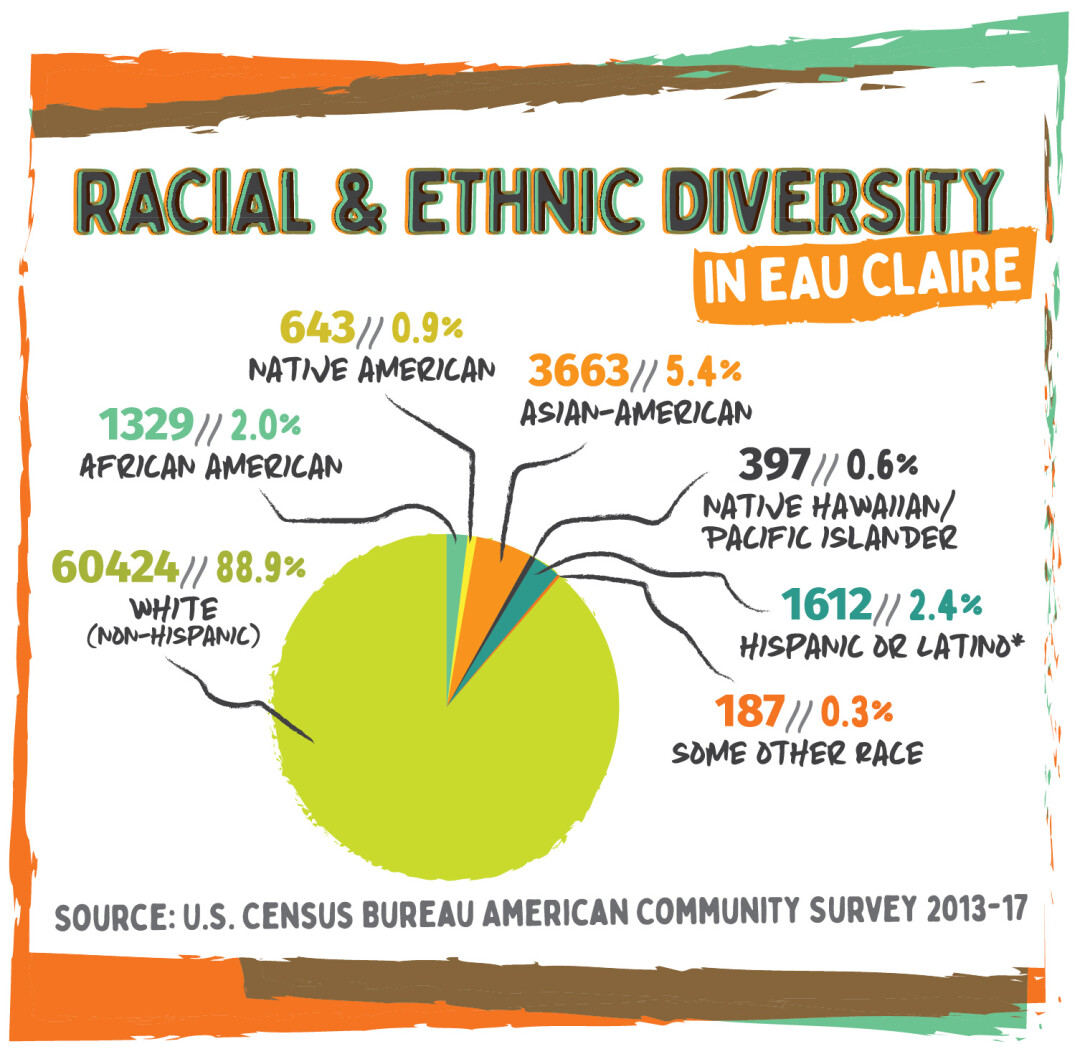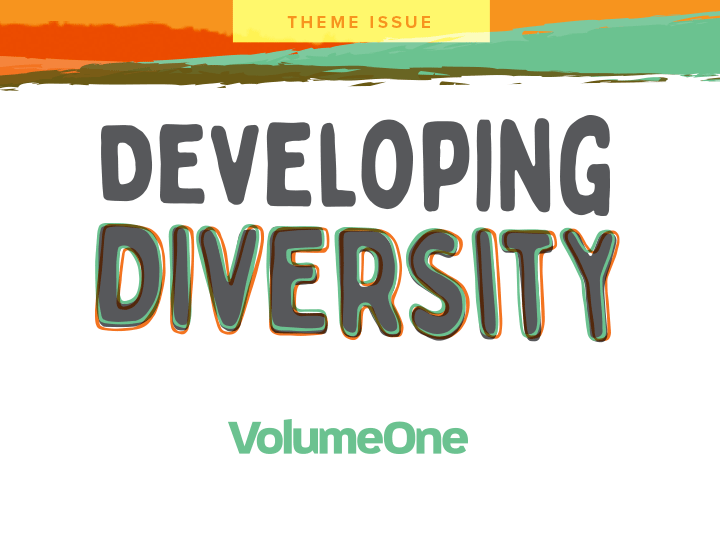How diverse are we? Take a look at the Chippewa Valley's racial and ethnic makeup ...
Tom Giffey, design by Taylor McCumber

So how diverse is the Chippewa Valley, anyway? The answer to this question depends on your perspective – and your definition of diversity.
Figures for the racial and ethnic background of Chippewa Valley residents are relatively easy to track down, courtesy of the U.S. Census Bureau. They show a region that is growing more diverse, but that (unsurprisingly) remains largely white.

According to five-year estimates (2013-17) based on the annual American Community Survey, 88.9 percent of the City of Eau Claire’s 67,945 residents describe themselves as “white alone.” This leaves 11.1 percent as people of color – whether that’s African-Americans, Asian-Americas, Native Americans, or Hispanics. (The Census Bureau treats Hispanic origin as a heritage, nationality, or lineage, not a race, so Hispanic people may describe themselves as of any race.)
For those familiar with the decades-long influx of Hmong refugees to the Chippewa Valley, the relatively large number of Asian-Americans in Eau Claire isn’t a surprise. Of the 3,223 people identified as Asian-American alone in the 2013-17 estimates, 2,258 were listed as “other Asian” (i.e., they aren’t Asian Indian, Chinese, Filipino, Japanese, Korean, or Vietnamese). Presumably, most of these people are Hmong.

Looking at the Chippewa Valley as a whole, the total number of people of color grows, but the percentages of individual minority groups decline. To put it more bluntly, the rest of the Chippewa Valley outside Eau Claire is whiter than Eau Claire itself. According to the same 2013-17 five-year estimate, the Eau Claire metro area (which encompasses all of Chippewa and Eau Claire counties) is 91.9 percent white. This shouldn’t be a surprise: Nationwide, urban centers tend to be more diverse than rural areas.
The changing racial and ethnic makeup of the Chippewa Valley is most clearly visible in the classroom. Nearly one-quarter of Eau Claire public school students are people of color.
Yet across western Wisconsin, demographic shifts have created pockets of diversity in communities that were once homogeneous. Consider Arcadia: More than 1,100 of this city’s 3,000 inhabitants are Hispanic, according to the latest estimates. Meanwhile, because of an influx of Somali immigrants, more than 13 percent of Barron residents have African ancestry. While these communities remain the exception rather than the rule, but they represent nationwide shifts: As of last year, the U.S. population was estimated to be about 38 percent people of color.
So how have the local figures changed over the years? A glance at the results of the 2000 U.S. Census shows a region moving toward greater diversity. That year, the national headcount found that nearly 93 percent of Eau Claire residents (and 95.6 percent of metro area residents) described themselves as white alone.

The changing racial and ethnic makeup of the Chippewa Valley is most clearly visible in public schools. According to the Wisconsin Department of Public Instruction, nearly one-quarter of Eau Claire Area School District students were people of color in the 2017-18 school year. (The figure was 23.9 percent, to be exact.) Nearly 10 percent of the district’s students were Asian-American, while more than 5 percent were Hispanic. Dialing back a decade to the 2007-08 school year finds that only about 15 percent of students were people of color. While the share of Asian-American students remained relatively steady over the 10-year period, the number of Hispanic students more than doubled, from 189 to 615.
No group is a monolith, of course – even the white majority. More than 40 percent of Eau Clairians report they have German ancestry, and one in five claim Norwegian heritage. About 10 percent are Irish, while Polish and English make up 6 percent each. All told, the 2013-17 American Community Survey identified 64 distinct ancestries in the city of Eau Claire alone, from Armenian and Arab to Welsh and West Indian. All have added to the diverse cultural quilt that is the Chippewa Valley.

